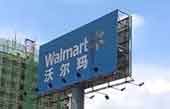| |
|
| |
|
 |
Supply
Chain by the Numbers |
| |
|
| |
- May 28, 2015 -
|
| |
|
| |
|
| |
|
| |
Chief Procurement Officers Living Large; Nat Gas Trucks and Methane Leaks; Walmart Sources Local Big Time - in China; DC Costs as a Percent of Sales |
| |
|
| |
| |
| |
$464,756 |

|
|
|
| |
| |
|
95%
|
 |
That is the share of goods Walmart sells in its 412 retail stores in China that are made in that country, according to the retail giant's Chinese web site. That data point came up as a result of news last week that Walmart will be cutting back its use of Hong Kong-based sourcing firm Li & Fung and work directly with Asian suppliers, rather than using the famous middleman as its agent. Li & Fung's revenues have been flat or modestly down over the past three years, as some of its customers - now including Walmart - look to reduce costs and take more control of their supply chains by going direct. However, Li & Fung’s CEO says global supply chains are becoming more complex, which will increase its business. Despite Walmart's recent Buy American initiative, we are quite sure the percent of goods its sells in US stores made domestically is a long, long way from 95%.
|
| |
| |
|
| |
| |
5% |
|
That was the median level of distribution costs – not including transportation - as a percent of a company's sales in 2014, according to the latest annual DC Metrics report from Dr. Karl Manrodt, now at Georgia College and State University, and the Warehouse Education and Research Council (WERC). That sounds a little high to us, but that's what the data from 450 respondents said. The top 20% of companies, however, had DC costs of 2.04% of sales or less. The worst quintile, meanwhile, endures distribution costs of more than 11.2% of sales. Of course, DC costs vary dramatically by industry sector and order profile - e.g., pallet in, pallet out versus heavy piece picking, which this data doesn't capture.
|
| |
| |
|
|
|
| |
 |
 |
| |
|
|
| |